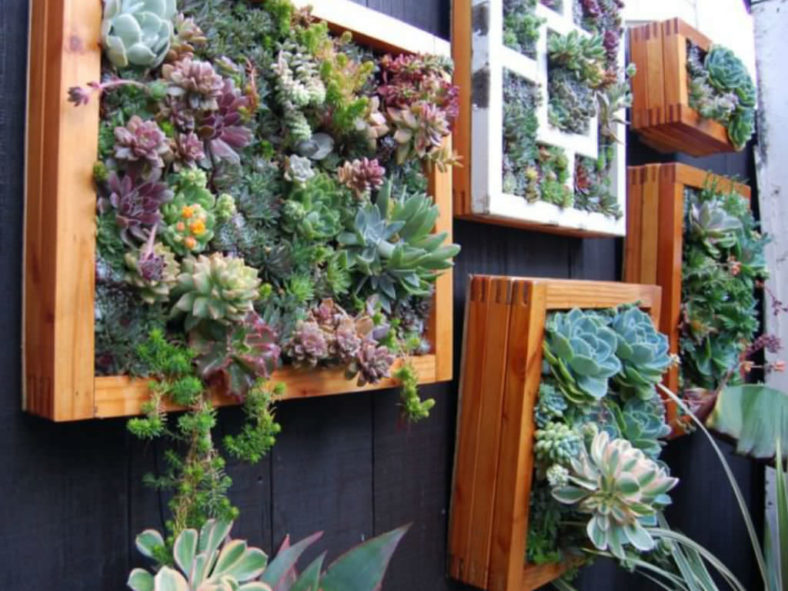Succulents and vertical planters team up to provide several benefits. The succulents require less water than traditional garden plants and are relatively low maintenance. In addition, vertical planters add interest to otherwise plain walls and fences and save valuable ground space. Put the two together, and you have a planter with a wow factor that does not require a full-time gardener.
If you know a few tips, you can create various vertical succulent planters for a portion of the cost of buying commercial vertical planters.
1. Use small crates, shadow boxes, painting frames, or simple wooden boxes as your planter's base. Choose a box to create your planter roughly 2 inches (5 cm) deep. Deeper planters may lead to compacting, shifting, and sinking soil.
2. Cover the top of your planter with 0.25-inch (0.5 cm) mesh wire hardware cloth. This will hold your plants and soil in place while allowing them to grow and spread.
3. Use plants with similar care instructions. It takes more than one season for your plants to grow and fill out the planter box, so they will need to be overwintered. Understand that some succulents must go dormant, some will withstand cold temperatures, and others must be kept indoors. Plan accordingly.

4. Leave the vertical planter on a flat surface for two to three months before you hang it, or your plants may not develop the strong root systems they need to survive and avoid falling out of the planter.
5. Skip watering your vertical succulent garden for a week after planting to let the roots harden and establish their place in the soil. Water weekly in summer and spring, and monthly in winter and fall. Take the whole planter off the wall, and lay it flat to avoid washing away the soil inside.
6. Fertilize with a mix of one part liquid houseplant fertilizer to four parts water monthly during the summer growing season.
Source: sfgate.com
Links
- Succupedia: Browse succulents by Scientific Name, Common Name, Genus, Family, USDA Hardiness Zone, Origin, or cacti by Genus